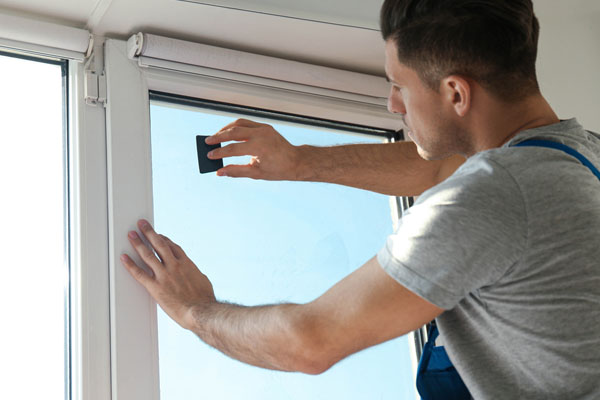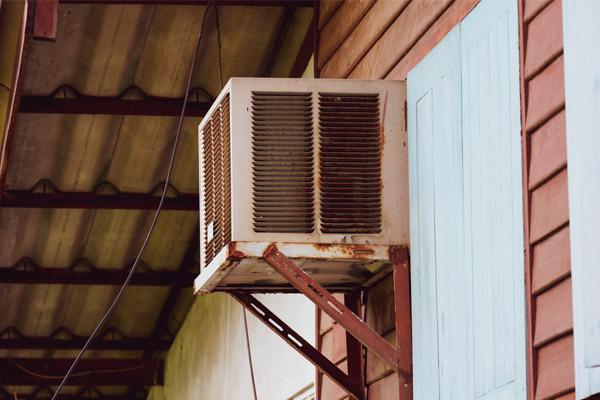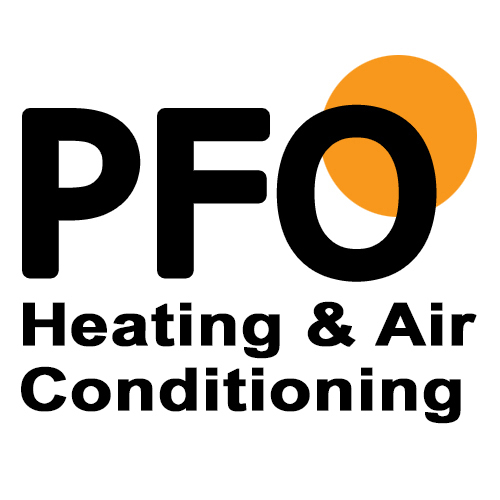
Many homes face the challenge of uneven temperature distribution, with certain areas consistently warmer than others. This often leads to discomfort during the heat, particularly in residences lacking modern air conditioning solutions—like many charming, historic properties. Fortunately, multiple strategies exist to effectively cool these spaces without relying on AC. Collaborating with a knowledgeable HVAC service provider, such as PFO Heating & Air Conditioning, can unveil a range of cost-effective and practical solutions to enhance comfort in your home during the summer months. Keep reading to explore how to cool a room without AC.
Effective Techniques for Cooling Rooms Without Air Conditioning
Contents
- 1 Effective Techniques for Cooling Rooms Without Air Conditioning
- 1.1 Optimize Your Window Curtains
- 1.2 Utilize Heat-Reflecting Window Films
- 1.3 Seal and Isolate Specific Areas
- 1.4 Minimize Indoor Cooking Heat
- 1.5 Upgrade to Energy-Efficient Lighting
- 1.6 Position Fans for Optimal Airflow
- 1.7 Control Indoor Humidity Levels
- 1.8 Utilize Cooler Nighttime Air
- 1.9 Strategically Place Indoor Plants
- 1.10 Consider Installing a Ductless Air Conditioner
- 1.11 Understand the Disadvantages of a Window A/C
- 1.12 Conclusion
- 2 Contact PFO Heating & Air Conditioning for Expert HVAC Services
This article outlines ten practical methods to cool a room lacking adequate air conditioning.
Optimize Your Window Curtains
To prevent heat buildup, use blackout curtains, which effectively block sunlight and its accompanying warmth. Research indicates that about 76% of sunlight entering through windows can increase indoor temperatures significantly.
The Department of Energy recommends employing medium-colored draperies with a white plastic backing to optimize their heat-reducing properties. Additionally, installing blackout curtains can serve as a natural insulator, further stabilizing room temperatures.
Utilize Heat-Reflecting Window Films

Installing heat-reflecting window films is an effective way to reduce heat gain in your home without blocking natural light. These films reflect solar radiation away from your windows, keeping indoor spaces cooler and reducing reliance on air conditioning. This solution is particularly beneficial in areas that receive a lot of sunlight, helping maintain cooler room temperatures even during peak sunlight hours.
Seal and Isolate Specific Areas
Maximize cooling efficiency in frequently used rooms by closing doors to less utilized areas of your home. This strategy helps contain the cooler air in occupied spaces, making it easier to maintain a comfortable temperature where it’s most needed.
Additionally, address any gaps in exterior-facing doors by installing weatherstripping. This affordable solution prevents warm air from entering and stops cool air from escaping, and it’s simple enough to apply on your own.
Minimize Indoor Cooking Heat

The heat generated by stove burners and ovens can significantly raise your home’s temperature. To avoid this, limit the use of these appliances, especially during warm weather. Opt for outdoor grilling, which keeps the heat outside and enhances your summer dining experience. Alternatively, explore no-cook recipes that are perfect for keeping your kitchen cool and your meals refreshing.
Upgrade to Energy-Efficient Lighting
Traditional incandescent light bulbs utilize a lot of energy and emit a substantial amount of heat. Replacing them with LED bulbs can significantly reduce the heat generated within your home. LEDs are far more energy-efficient, converting most of their energy into light rather than heat. Compact fluorescent bulbs are another good option, offering reduced heat output and energy savings compared to incandescent bulbs.
Position Fans for Optimal Airflow
While fans do not cool air, their strategic placement is crucial for effective air circulation. Position fans to create a cross breeze that pushes warm air out and draws cooler air in. Place a fan near the coolest part of your home, angled towards warmer areas, to facilitate this airflow. Moreover, placing a bowl of ice in front of a fan can help circulate chilled air throughout the room.
Control Indoor Humidity Levels
Using a dehumidifier won’t lower the temperature, but reducing high humidity levels can make your home more comfortable. Excess moisture in the air can result in you feeling hotter and sweatier, as it slows down the evaporation of sweat. A dehumidifier helps create a drier, more comfortable environment.
Utilize Cooler Nighttime Air
In regions where nighttime temperatures drop, take advantage by opening your windows during the evening to let in the cool breeze. Remember to close them in the morning and draw the curtains to keep the cool air in and the heat out.
Strategically Place Indoor Plants
Using indoor plants can naturally cool your home with minimal effort. Plants such as ferns, palms, and peace lilies absorb heat and emit moisture into the air through transpiration, which can help lower room temperatures. Placing several large plants strategically around your home can create more pleasant and cooler environment. This is an easy and eco-friendly way to enhance your indoor climate while adding greenery to your decor.
Consider Installing a Ductless Air Conditioner
A ductless air conditioning system is an effective solution for consistently warm rooms. These systems have an indoor unit, which can be mounted on a ceiling or wall, and an outdoor unit connected by wiring and refrigerant hoses. The indoor unit delivers cool air directly to the room, while the outdoor unit expels heat. This option is ideal for targeting specific areas in your home without requiring extensive ductwork.
Advantages of Ductless Air Conditioning Systems
Ductless air conditioning systems offer a flexible and efficient cooling solution for your home. Unlike traditional window units, these systems can be installed virtually anywhere in a room, including high up on an interior wall. This placement minimizes disruption to your home’s aesthetics and maximizes the use of vertical space.
Additionally, ductless systems are not limited to perimeter walls, making them suitable even for interior rooms. This flexibility is particularly advantageous in larger buildings where certain areas may be challenging to cool effectively.
Another significant benefit is that ductless systems do not obstruct windows, allowing natural light and views to be enjoyed without compromise. They are also considerably quieter, as the main noise-generating components are located outside, enhancing the tranquility within your living spaces.
Additional Benefits of Ductless Mini-Split Air Conditioners
Though initially more costly than window units, ductless mini-split systems offer greater energy efficiency, leading to lower cooling expenses over time. This can translate into significant savings.
Furthermore, these systems are praised for their quiet operation and discreet design, blending seamlessly into your home without detracting from its decor.
Crucially, ductless systems enhance indoor air quality through advanced multi-stage filtration. This feature helps prevent the influx of pollutants into your living space, lowering the risk of respiratory issues and offering relief for those with existing respiratory conditions.
Understand the Disadvantages of a Window A/C

Window air conditioner units combine all critical components into a single system that expels hot air from one end and introduces cold air from the other. While these units are typically inexpensive and straightforward to install, they must be placed in a window or along a perimeter wall, leading to several drawbacks when compared to ductless mini-split A/C systems:
- Obstruction of Views and Natural Light: Installed in windows, they block natural light and views.
- Limited Cooling Area: They are generally effective in cooling only the room in which they are installed.
- Higher Operational Costs: The energy efficiency of window units often results in higher utility costs.
- Noise Levels: Window A/C units can be quite noisy, which may be disruptive.
- Risk of Mold and Bacteria: These units can harbor mold and bacteria, potentially degrading indoor air quality.
- Aesthetic and Security Concerns: Window A/C units can be unsightly and may provide an easy entry point for thieves.
Conclusion
While the strategies outlined can provide temporary relief from the heat, they may fall short in terms of consistency, security, and maintaining high indoor air quality. For those seeking a reliable, effective, and efficient cooling solution, a ductless air conditioner stands out as the optimal choice. This system ensures a comfortable indoor climate and enhances your home’s overall safety and air quality, making it a superior investment for long-term comfort.
Contact PFO Heating & Air Conditioning for Expert HVAC Services
PFO Heating & Air Conditioning is a premier provider of heating and cooling solutions in the Greater Princeton, NJ area. Our team of professionally certified HVAC technicians offers a wide range of services, including routine maintenance, detailed repairs, and expert installations. Each technician’s extensive knowledge and experience ensure that your HVAC system is maintained to the highest standards.
We offer competitive rates for all our services to improve comfort, enhance system efficiency, and reduce your energy costs. Whether you need repairs or are considering an upgrade, our team will help you find the best solutions within your budget.
We guarantee your satisfaction with our services, underscoring our commitment to your comfort and trust. Call PFO Heating & Air Conditioning today for a free in-home estimate and learn how we can help make your home more comfortable and energy-efficient.
Click here to contact us now or call us at (800) 253-9001 to find out more! Click the link to view our service area.

Related Articles:



